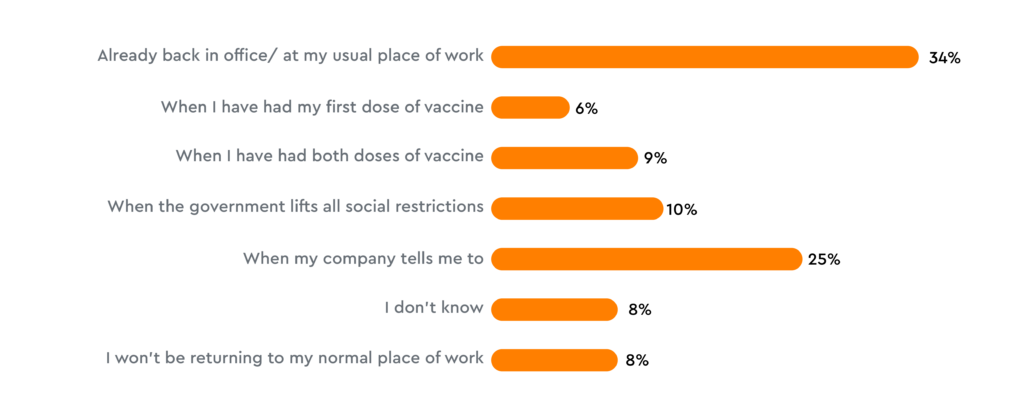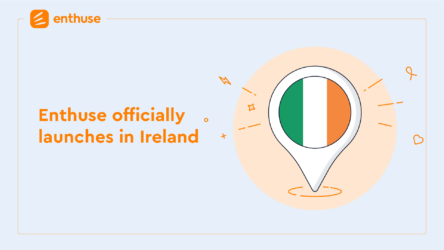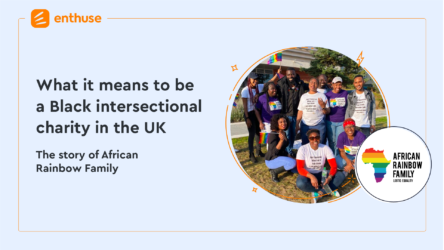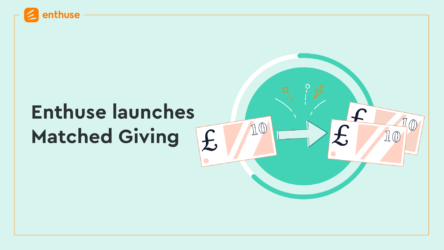
The end of the government’s work from home guidance, as part of the removal of Covid restrictions, presents a series of challenges for companies, and their HR departments in particular, to manage as they look to define what their workplace looks like going forward.
A key part of that transition will be helping to motivate employees in a variety of different ways – one of which will be reconnecting with charity fundraising. Like most elements of the return to the workplace, it is an area filled with complications for HR teams to navigate. This will not be business as usual, at least not in the short to medium term.
So, without further ado, let’s examine how and when employees will be returning to the office and what this means for workplace fundraising.
Workplace displacement
With the majority of restrictions removed and the vaccination programme continuing its progress, many companies are kickstarting their plans for staff to head back to the office. Charity activity in the workplace normally represents an important part of employee engagement programmes, as well as a key part of fundraising plans for causes. But this has been challenging and at times impossible over the last 18 months.
Our Donor Pulse Corporate report shows that 58% of workers were displaced from their normal workplace last March – either through a switch to home working or being placed on furlough. This was on top of 7% who already worked from home meaning a total of two thirds of workers were physically away from workplaces.
The research also shows the impact on different age groups. Gen Z and millennials bore the brunt of the changes, with 29% of 18-25 year olds and 26-35 year olds furloughed or made redundant. A further 34% of under 40s began working from home. For Gen X (40-54 year olds), there was a large-scale shift to home working with 43% of them making this move, while only 16% were furloughed or lost their jobs. 55-64 year olds were the least impacted by the change with 40% of them continuing at their normal workplace. This is significant as younger generations are the most engaged with charity fundraising as we will outline later on in this blog
The return to the office
Our research indicates that a third of people do not have a sense of when they will be returning to an office, as they either do not know (8%) or it’s down to when their company tells them to (25%) and they are not clear on when that is. A further 1 in 12 won’t be returning to their normal place of work at all.

Something that is clearer for people though, is that they are unlikely to be returning to the office five days a week. In fact, just a quarter of people anticipate they will be back in the office every day of the week. 50% expect to return to the office three days a week or less or have a flexible arrangement.
For HR teams, this means having to think through employee engagement activities, such as charity fundraising carefully. There will be a lot less people in the office every day to take part in activities, and with staggered working days for companies that take smaller office spaces, it will be harder to coordinate campaigns and appeals that run or launch on a particular day. It also means there will be much less opportunity for cash donations.
The state of overall giving
The good news for workplace fundraisers is that donors have continued to give with conviction. Looking back across the year, following the very early months of the pandemic there was a sustained and remarkably consistent boost in the number of people giving to charity. Only 59% of the public had donated at the start of the pandemic. But this levelled up three months later to just under 7 out of 10 people having donated and has stayed at the figure of 69% since October 2020.
In the last quarter, under 40s have again proven to be the most generous with 81% having given, whereas only 62% of over 40s have donated. This is worth bearing in mind when planning workplace fundraising. Harnessing the enthusiasm and likelihood to donate of younger age groups can be important factors when appointing internal champions or starting cross-team groups to rally others.

The number of causes and their popularity
The consistency of giving has also been reflected in the number of people donating to multiple charities. 46% of the public gave to two or more charities in the last three months, with 30% giving to three or more. This is an important point for selecting the charities your organisation fundraises for. For example, focusing on an area that needs support rather than a single charity in that area may help to broaden support across your business.
In terms of popular causes, health and the NHS started as the main focus initially during the pandemic and continues to be well supported. Next there was a jump in mental health donations – one which has continued to increase in popularity. This has been followed by a rise in support for hunger and homelessness. The last three months have seen reactive giving move to children and education, with support for children’s charities moving from 27% to 32% and education charities moving from 9% to 13%. The public has been very responsive to where they see the immediate need so for HR teams, it is worth considering how to support a variety of charities on an agile basis rather than just focusing on one or two, while still keeping consistent with the values of your organisation.
How Enthuse can support HR teams
Over the last year, the public have shown their desire to consistently help charities with seven out of ten donating throughout the majority of the pandemic. This combined with the increased interest of workers, particularly the under 40s, in taking part in workplace fundraising provides an opportunity for HR teams to engage with their employees during the challenging period of the return to workplaces.
But as well as the current challenges of mixing physical and virtual campaigns, there are other underlying issues that need to be tackled. For example, it can be very time consuming and nearly impossible to track and report the total amount raised across a business when the business is running campaigns for different charities. This problem can be exacerbated when different offices are running their own campaigns or even more complex when multiple offices are running multiple fundraising events for different charities.
This difficulty can undermine the opportunity to celebrate the fantastic fundraising efforts of the whole company and different teams or offices taking part. Enthuse has designed its corporate fundraising product with this in mind. It provides companies with the ability to centralise fundraising across their company with one hub profile page through which they can keep track of all the fundraising being done by offices, teams and individuals within their business.
For more detail into workplace fundraising and the future of work you can download our full Donor Pulse Corporate report here. Equally, to find out more about our corporate fundraising solutions, click here.











